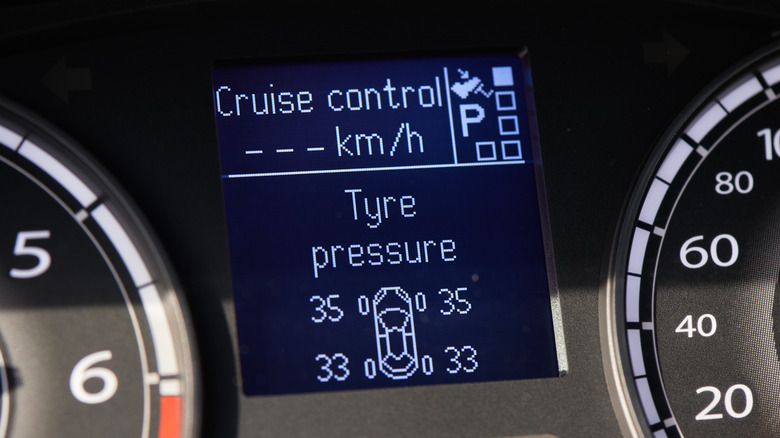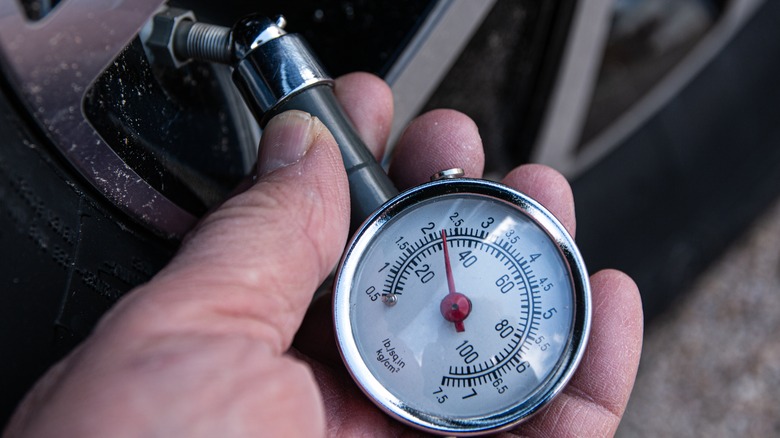Here's How Reliable Your Tire Pressure Monitoring System Is, According To AAA
A Tire Pressure Monitoring System (TPMS) has been standard on every light vehicle (those weighing 10,000 lbs. or less) that has been sold since September 1, 2007, effectively making TPMS a part of every car made since the 2008 model year. This action traces back to the TREAD Act passed by Congress in the wake of the Firestone Tire/Ford Explorer rollover scandal, one of the deadliest defects in automotive history. The TREAD Act mandated, "...a warning system in new motor vehicles to indicate to the operator when a tire is significantly under inflated."
In October of 2023, the American Automobile Association (AAA) set out to check the accuracy of TPMS in 11 different test vehicles made by BMW, Cadillac, Ford (3 vehicles), GMC (2 vehicles), Hyundai, Lexus, Tesla, and Toyota. AAA had two research questions that needed answers — the first was "How do displayed tire pressure readings compare to actual tire pressure?" and the second was "Does the TPMS light illuminate when tire pressure is lowered to 75 percent of placard pressure?" Placard pressure is the manufacturer's recommended tire pressure settings that are posted on a sticker placed on the vehicle, usually located in the driver's door jamb. All vehicles tested by AAA had TPMS that displayed each individual tire's current pressure reading. The AAA's findings on the first question revealed that the average difference between each car's actual tire pressure and the pressure displayed on the TPMS was between 1.2% and 1.5%, meaning that there was no significant systemic error in the TPMS in the tested vehicles.
What else did the AAA's TPMS accuracy study reveal?
As to the AAA's second research question (Does the TPMS light illuminate when tire pressure is lowered to 75 percent of placard pressure?), AAA's results were that five of the 11 tested vehicles did illuminate the TPMS warning light when the tire pressures were reduced to 75% of placard pressure. Five more illuminated their TPMS lights with a further deflation of between 0.8 and 2.9 psi, based on the specific vehicle tested. The remaining vehicle in the test did not illuminate its TPMS light, even when tire pressure was reduced to 65% of placard pressure and the vehicle (a 2022 Ford F-250) was driven a mile. This occurred in spite of the F-250's TPMS updating the reduction in inflation pressure immediately.
AAA concluded that with the one noted exception, the TPMS generally did a good job of monitoring tire pressures accurately and alerting drivers when their tires were approaching dangerously low pressure levels. But AAA also emphasized that the individual tire pressure readings provided by the TPMS should be used by drivers to maintain their placard pressures on an ongoing basis, without waiting for the TPMS warning light to signal very low pressure before inflating their tires back to normal. If the TPMS light keeps coming on in your car, we have some answers for you.

